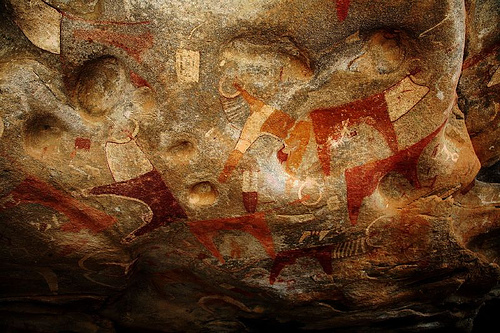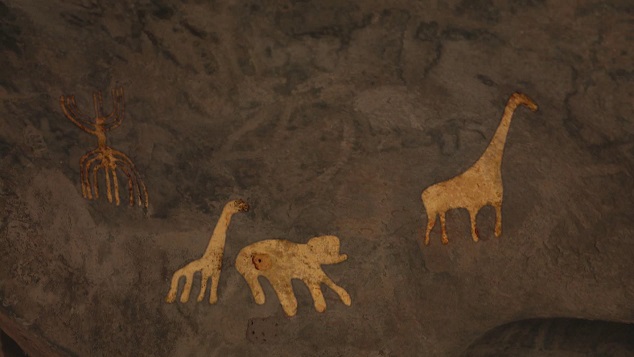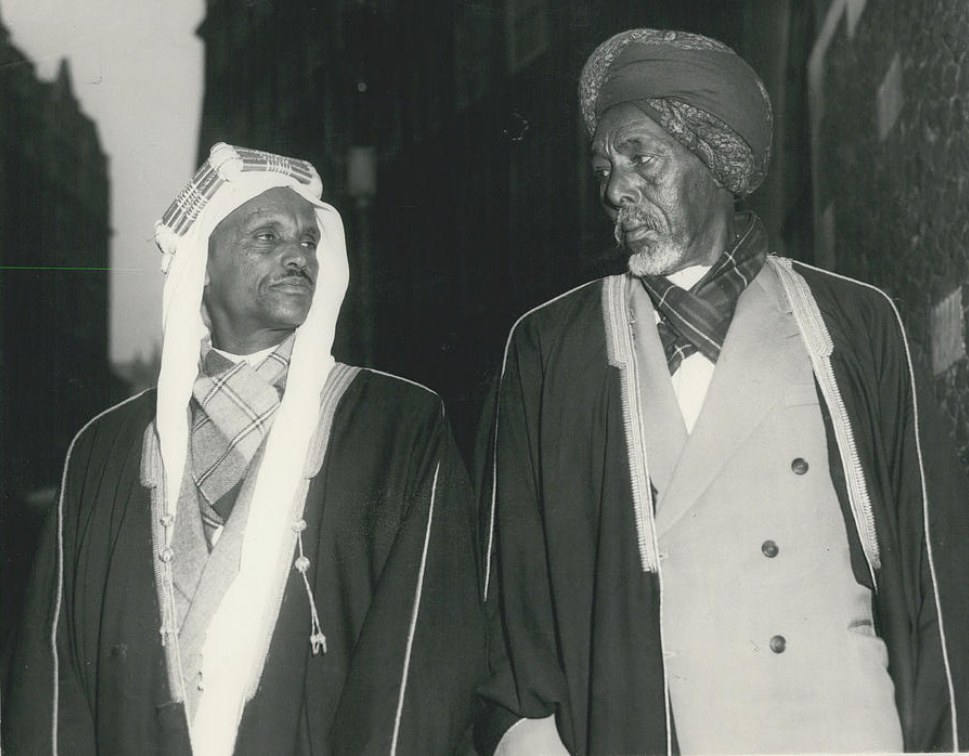|
Eidagale
The Eidagalle (; ) is a major Somali clan of the Isaaq clan family. Members of this clan are concentrated in Somaliland and the Somali region. They are the traditional holders of the Isaaq Sultanate since the 18th century. As descendants of Ismail bin Sheikh Isaaq, its members form a part of the Habar Magaadle confederation, and they constitute the largest sub-clan of the Isaaq. They traditionally consist of nomadic pastoralists, merchants and skilled poets. Distribution The Eidagalle, largely clan make up a significant percentage of the population in Maroodi Jeex region of Somaliland, as well as the Daroor, Aware and Misraq Gashamo zones in the Somali region of Ethiopia. They also live on the middle and south eastern side of Hargeisa as well as the Salahlay District in eastern Maroodi Jeex region. A subclan of the Eidagale, the Guuyoobe also inhabit the Oodweyne district in Togdheer region. They also have a large settlement in Kenya where they are known as a constituent ... [...More Info...] [...Related Items...] OR: [Wikipedia] [Google] [Baidu] |
Garhajis
The Habr Garhajis also contemporarily known as the Garhajis (, , Full Nasab: ''Ismā'īl al Qadhi ibn ash-Shaykh Isḥāq ibn Aḥmad'') is a major Northern Somali clan of the wider Isaaq clan family. They are the traditional holders of the Isaaq Sultanate and Habr Yunis Sultanate since the 18th century. As descendants of Ismail bin Sheikh Isaaq, its members form a part of the Habar Magaadle confederation, and they constitute one of the largest sub-clans of the Isaaq. The Garhajis are divided into two major sub-clans: the Habr Yunis (''Sa'īd Ismail'') and Eidagale (''Da'ud Isma'īl''). They are traditionally nomadic pastoralists, merchants and skilled poets. Distribution The Garhajis inhabit the western Togdheer, southern and eastern Maroodi Jeex, southern Sahil, northern Sool and central Sanaag regions of Somaliland. As well as inhabiting the Degehbur, Wardheer and Aware zones in the Haud region of Ethiopia, they also have a large settlement in Kenya where the ... [...More Info...] [...Related Items...] OR: [Wikipedia] [Google] [Baidu] |
Isaaq Sultanate
The Isaaq Sultanate (, Wadaad's writing, Wadaad: , ) was a Muslims, Muslim sultanate that ruled parts of the Horn of Africa in the 18th and 19th centuries. The kingdom spanned the territories of the Isaaq clan in modern-day Somaliland and Ethiopia. It was governed by the Guled Dynasty, Rer Guled Eidagale branch of the Garhajis clan and is the pre-colonial predecessor to the Republic of Somaliland. History Origins Somali genealogical tradition places the origin of the Isaaq tribe in the 12th or 13th century with the arrival of Sheikh Ishaaq bin Ahmed, Ishaaq Bin Ahmed (Sheikh Ishaaq) was one of the scholars who crossed the sea from Arabia to the Horn of Africa.Rima Berns McGown, ''Muslims in the diaspora'', (University of Toronto Press: 1999), pp. 27–28I.M. Lewis, ''A Modern History of the Somali'', fourth edition (Oxford: James Currey, 2002), p. 22 Sheikh Ishaaq settled in the coastal town of Maydh in modern-day northeastern Somaliland. Hence, Sheikh Ishaaq married two local wo ... [...More Info...] [...Related Items...] OR: [Wikipedia] [Google] [Baidu] |
Isaaq
The Isaaq (, , ''Banu Ishaq'') is a major Somali clans, Somali clan. It is one of the largest Somali clan families in the Horn of Africa, with a large and densely populated traditional territory. The Isaaq people claim in a traditional legend to have descended from Ishaaq bin Ahmed, Sheikh Ishaaq bin Ahmed, an Ulama, Islamic scholar who purportedly traveled to Somaliland in the 12th or 13th century and married two women; one from the local Dir (clan), Dir clan.I.M. Lewis, ''A Modern History of the Somali'', fourth edition (Oxford: James Currey, 2002), pp. 22–23. He is said to have sired eight sons who are the common ancestors of the clans of the Isaaq clan-family. He remained in Maydh until his death. Overview Somali genealogical tradition places the origin of the Isaaq tribe in the 12th or 13th century with the arrival of the Sheikh Ishaaq bin Ahmed, Ishaaq Bin Ahmed (Sheikh Ishaaq) from Arabian Peninsula, Arabia. Sheikh Ishaaq settled in the coastal town of Maydh in mode ... [...More Info...] [...Related Items...] OR: [Wikipedia] [Google] [Baidu] |
Hargeisa
Hargeisa ( ; ; ) is the capital and largest city of the Republic of Somaliland, a ''List of states with limited recognition, de facto'' sovereign state in the Horn of Africa, still considered internationally to be part of Somalia. It is also the regional capital of the Maroodi Jeex region of Somaliland. Hargeisa was founded as a watering and trading stop between the coast and the interior by the Isaaq Sultanate. Initially it served as a watering well for the vast livestock of the Isaaq clan that inhabited that specific region and later were joined by other Isaaq clans that currently inhabit Hargeisa. In 1960, the Somaliland Protectorate gained independence from the United Kingdom and as scheduled united days later with the Trust Territory of Somaliland (former Italian Somaliland) to form the Somali Republic on 1 July.Encyclopædia Britannica, ''The New Encyclopædia Britannica'', (Encyclopædia Britannica: 2002), p.835 Up to 90% of the city was destroyed during the Isaaq genoci ... [...More Info...] [...Related Items...] OR: [Wikipedia] [Google] [Baidu] |
Misraq Gashamo
Misraq Gaashaamo is one of the woredas in the Somali Region of Ethiopia. Part of the Jarar zone, Daror is bordered on the south by the Werder Zone, on the southwest by Gunagadow, on the west by Aware, and on the north by Somaliland; it is frequently considered part of the Haud. The biggest town and capital of this district is Gaashaamo. The district is named after the town. History Before 1960, there was no water available during the dry season in Misraq Gashamo; the pastures in the woreda were traditionally abandoned by the local nomadic pastoralists for areas with abundant water with the advent of the dry season, like Burco in Somaliland. In the years after 1960 the construction of private ''birkas'' (underground concrete water tanks), which greatly increased after 1970; by 1998 there were 128 clusters of ''birkas'', each cluster corresponding to the number of permanent or semi-permanent settlements in the woreda. By the 1980s, pastoralists grazing in Misraq Gashamo had al ... [...More Info...] [...Related Items...] OR: [Wikipedia] [Google] [Baidu] |
Somaliland
Somaliland, officially the Republic of Somaliland, is an List of states with limited recognition, unrecognised country in the Horn of Africa. It is located in the southern coast of the Gulf of Aden and bordered by Djibouti to the northwest, Ethiopia to the south and west, and Somalia to the east. Its claimed territory has an area of , with approximately 6.2 million people as of 2024. The capital and largest city is Hargeisa. Various Somali Muslim kingdoms were established in the area during the early Islamic period, including in the 14th to 15th centuries the Zeila-based Adal Sultanate. In the early modern period, successor states to the Adal Sultanate emerged, including the Isaaq Sultanate which was established in the middle of the 18th century. In the late 19th century, the United Kingdom signed agreements with various clans in the area, establishing the British Somaliland, Somaliland Protectorate, which was formally granted independence by the United Kingdom as the Sta ... [...More Info...] [...Related Items...] OR: [Wikipedia] [Google] [Baidu] |
Abdillahi Deria
Abdillahi Deria (, ; died January 1967) was the fifth Grand Sultan of the Isaaq Sultanate and a notable Somali anti-colonial figure. Biography Abdillahi was the son of Sultan Deria Hassan whom he succeeded in 1943 after his death. Abdillahi was described as a religious man, and was educated in Aden before returning to Somaliland in 1920. A member of the Eidagale sub-division of the Garhajis subclan, Reer Guuled his reign covered the later years of British Somaliland and most of the subsequent Somali Republic. Somali National League Sultan Abdillahi was a vehement anti-colonialist and was a prominent member of the ''Somali National League'' the dominant party in the protectorate. He directly encouraged agitation and petitions by local British Somaliland communities to file with authorities. He would soon become the secretary general of the party and one of its critical tasks was resolving the Haud dispute. Haud Delegation In response to the cessation of Haud Reserve and t ... [...More Info...] [...Related Items...] OR: [Wikipedia] [Google] [Baidu] |
Aw Barkhadle
Yusuf bin Ahmad al-Kawneyn () (b. 10th century), popularly known as Aw Barkhadle ("Blessed Father")Abdullahi, p.13 or Yusuf Al Kownayn, was an Islamic scholar and traveler based in Zeila, Somaliland. According to Dr. Enrico Cerulli, Yusuf Al Kawneyn is referenced in the Harar manuscripts. Biography Local Somali oral tradition and written Ethiopian history gives reason to believe Aw Barkhadle arrived from Arabia. However, some scholars hold the opinion that suggests Arabian origin stories pertaining to ancestral saints such as Yusuf, are potentially a myth by scholars and an Islamification of a pre-Islamic origin story that relates back to Waaq and ancestor worship. These myths would tie the Somalis to the prophets clan (Quraysh). Religious synchronism where the old religion is adapted to reflect the hegemony of the new in that the ancestral home of the ancestors in Arabia, the headquarters of Islam. Thus Yusuf has been affirmed to have 'exalted origins' through being related ... [...More Info...] [...Related Items...] OR: [Wikipedia] [Google] [Baidu] |
Somalia
Somalia, officially the Federal Republic of Somalia, is the easternmost country in continental Africa. The country is located in the Horn of Africa and is bordered by Ethiopia to the west, Djibouti to the northwest, Kenya to the southwest, the Gulf of Aden to the north, and the Indian Ocean to the east. Somalia has the longest coastline on Africa's mainland. Somalia has an estimated population of 18.1 million, of which 2.7 million live in the capital and largest city, Mogadishu. Around 85% of Somalia's residents are ethnic Somali people, Somalis. The official languages of the country are Somali language, Somali and Arabic, though Somali is the Languages of Somalia, primary language. Somalia has historic and religious ties to the Arab world. The people in Somalia are mainly Muslims, following the Sunni Islam, Sunni branch.. In antiquity, Somalia was an important commercial center. During the Middle Ages, several powerful Somali empires dominated the regional trade, including th ... [...More Info...] [...Related Items...] OR: [Wikipedia] [Google] [Baidu] |
Daroor (woreda)
Daroor (, also spelled , , and , Ge'ez ዳሮር) is a town in the Daror woreda, in the Somali Region of Ethiopia. It is frequently considered part of the Haud. It is approximately 30 km south of the border with Somaliland. History In 2020 Daroor had 334,016 inhabitants, according to the Ethiopian Central Statistical Agency. In 1997 of 9,397 inhabitants 99,47% of these were Somali, and 50 residents were from other ethnic groups. In 1988 a refugee camp was set up for Somalis. The refugee camp housed predominantly members of the Yonis Abdirahman, a sub-sub clan of Ciidagale a sub-clan of the Garhajis Isaaq clan. The camp's population fell from around 32000 to 12000 in September 1994. After renewed fighting in November, the population rose to 49.000. At the end of 2001 / the beginning of 2002 the camp was closed after most refugees voluntarily went home. The economy of the area was strongly affected when the Saudi Arabia Saudi Arabia, officially the Kingdom of ... [...More Info...] [...Related Items...] OR: [Wikipedia] [Google] [Baidu] |
Ishaaq Bin Ahmed
Ishaaq bin Ahmad bin Muhammad , more commonly known as Sheikh Ishaaq or Sheikh Isaaq (, ) is a prominent figure in the oral traditions of the Somali Isaaq clan-family. According to these traditions, which were also preserved in several Arabic Hagiology, hagiologies, he was an Islamic scholar of the Shafi'i school, Shafi’i school who crossed the sea from Arabia to the Horn of Africa. He is traditionally regarded as the Sayyid forefather of the Isaaq clan-family, whose territory in the Horn of Africa is wide and densely populated. Perry–Castañeda Library Map Collection – N.B. Various authorities indicate that the Isaaq is among the largest east African clans who adopted the somali languag Ioan Lewis, Lewis, Ioan M., ''A Modern History of the Somali'', fourth edition (Oxford: James Currey, 20 ... [...More Info...] [...Related Items...] OR: [Wikipedia] [Google] [Baidu] |
Arabic
Arabic (, , or , ) is a Central Semitic languages, Central Semitic language of the Afroasiatic languages, Afroasiatic language family spoken primarily in the Arab world. The International Organization for Standardization (ISO) assigns language codes to 32 varieties of Arabic, including its standard form of Literary Arabic, known as Modern Standard Arabic, which is derived from Classical Arabic. This distinction exists primarily among Western linguists; Arabic speakers themselves generally do not distinguish between Modern Standard Arabic and Classical Arabic, but rather refer to both as ( "the eloquent Arabic") or simply ' (). Arabic is the List of languages by the number of countries in which they are recognized as an official language, third most widespread official language after English and French, one of six official languages of the United Nations, and the Sacred language, liturgical language of Islam. Arabic is widely taught in schools and universities around the wo ... [...More Info...] [...Related Items...] OR: [Wikipedia] [Google] [Baidu] |








